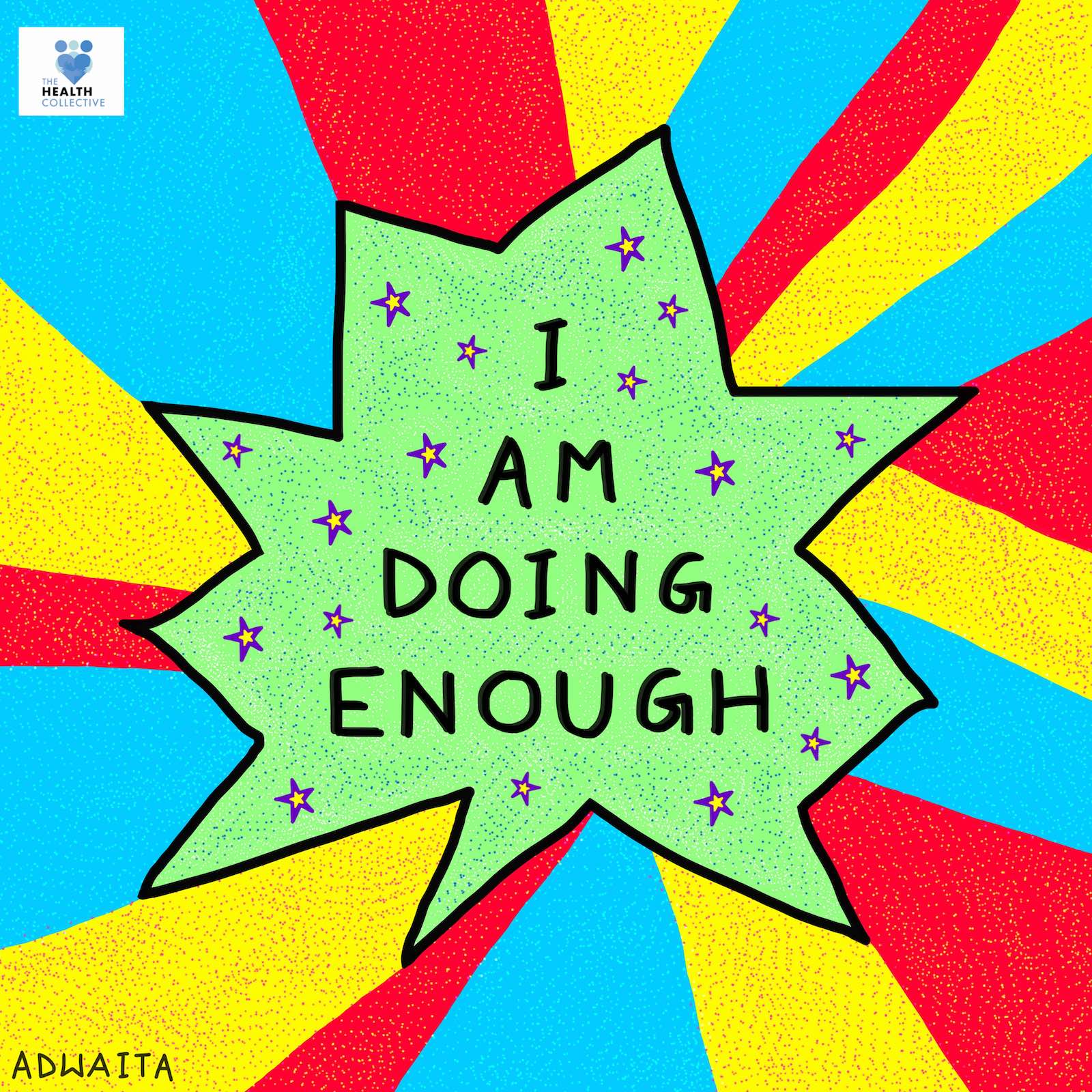Mental Health and Journalists: The Messenger’s Trauma
By Scherezade Siobhan
“Now, there is a distinct feeling of endlessness. It is neither good nor bad, it just seems to be this permanent lack of feeling. I am perpetually numb.”
B slumps into the chair like a shorn kite as they relate the story of the FIR against Pawan Jaiswal. Jaiswal is a reporter from Mirzapur (UP) who recently reported about children being served salt and roti for their midday meals. B is a proficient journalist who doubles up as an activist. B is also my therapy client. B has been experiencing severe depressive episodes pretty regularly for the last year or so. This summation of their current state of mind came after they returned from a particularly gruelling assignment in the stomping grounds of right-wing fascism in India. We’ve had several sessions unpacking the repercussions of reporting about borderless bloodshed and yet, this time around, the affect contouring their body seemed parried and devastating in its resignation.
ALSO READ: GASLIGHTING: GETTING HELP AND HEALING
This is not the first time that I have sat down for therapy with journalists and activists in recent past and found a debilitating strain of what is generically called PTSD or post-traumatic stress disorder. The classification doesn’t suffice because it is somewhat inelastic. We have to assess beyond obvious symptomatology. One of the more substantial changes in DSM V is the reclassification of PTSD away from ‘Anxiety Disorders’, into ‘Trauma and Stressor-Related Disorders’. A more welcoming part of this shift was the assimilation of ‘dissociative features’ while defining criteria for PTSD. It is a general assumption that trauma and stress responses are always visibly blatant through signs of hyper-vigilance and/or breakdowns. A critical part of traumatic stress, however, is also dissociation and de-personalization.
Dissociation is a process of separation or fragmentation of a person’s memory, identity, emotions, and behaviours, in a way where a person feels detached from their surroundings and bodily selves. Mild and transient dissociation is not uncommon and quite a few of us experience it when we daydream intensely or have brief moments of observing ourselves while feeling we are ‘outside’ of ourselves. Severe/intense absorption and continued dissociation could be triggered as defence or self-preservation response after exposure to trauma. Depersonalisation is a very specific sort of dissociation, which mostly accounts for an inability to relate to one’s own physical or worldly self. Some of my clients have described it as a form of ‘ghost-walking’ where they feel emptied of their intuitive or responsive being.
There is a lot of debate about how we should interpret and subsequently attend to the healing needs of anyone experiencing these challenges. It is a socio-cognitive problem that we still do not recognise; not just tending to the needs, but also the presence in clients/patients who experience these conditions. In the last several years as we have witnessed the rise of ‘capitalist realism’ and what theorist and writer Mark Fisher often referred to as ‘privatisation of stress’, we have erroneously pushed for the narrative of ‘individualised’ mental health, as opposed to recognising the key variables related to social, cultural, economic and ecological volatilities that exert influence upon us. More often than not, at the forefront of these weighty news cycles we can’t bear exposure to are reporters and activists who end up facing the brunt of being the tenacious bridge.
Globally, we are seeing a clampdown on collective freedoms as we face off with oppressive regimes more directly that ever before in recent history. Activists on the frontline are directly dealing with what can be denoted as ‘community violence’ where entire law-enforcing machineries are steered to despotise. Certain tangents of reportage and activist action means being at the center or the peripheries of prolonged dissent, without any obvious or immediate resolutions. It is a tough road to take when you know you are up against agents of vindictive supremacy that pivots itself along cogs of racism, classism, casteism and misogyny. Standing waist-deep in the floods of tyranny for innumerable hours, days, months and years, as you watch colleagues and comrades fall, arrested and/or fade, leaves complex imprints on a person’s somatic and psychological existence. Palestinian psychologist Hasan Zeyada refers to ‘multi-traumatic losses’ when speaking about how most people in cases of traumatic experiences might often lose a singular or a few aspects of their lives: their job or family or community. However, in Gaza for instance, people have lost everything. This could very well be true for what is happening in Kashmir or Hong Kong today. How does one feel rooted enough to function in the face of such ongoing trauma that has no expiry date?
It can be a daunting task to be a messenger of wounds. A journalist in today’s world is an exegete of the profound disturbances in our gathered truths. Journalists who have been actively reporting on environmental crises — sometimes at risking head-on collisions with powers-that-be — narrate days of returning from their stints and feeling a persistent inability to manage inter-personal relationships or even get meals on time. Body aches have been incremental and there are mysterious pains that weren’t around some years ago. This is a form of caregiver’s fatigue. This term is usually reserved for those who provide care for chronically unwell, disabled and/or dependent people in their lives. However, it now needs a mindful expansion to include those who are fighting for civic liberties and labour of planting themselves fully in the communities they are working with for long periods of time. On a scale of ennui to panic, it is hard to discard the impact of activism and journalistic endeavors, particularly from those who already belong to minoritised groups.

Parallel to the fatigue — or rather its origin — is exposure to vicarious trauma. A journalist I spoke to detailed how reporting about gender-based violence for the last several years is a permanent shadow cast on their own sense of safety as they move through the world. Vicarious trauma is often unavoidable if your work involves direct or indirect engagement with violent imagery and information.
ALSO READ: MENTAL HEALTH FIRST AID FOR SURVIVORS OF SEXUAL VIOLENCE
The other challenge is that a person might have experienced so many different kinds of traumas that they find it hard to focus on one and navigate it and instead it all ends up flooding their emotional reservoirs. Or consider you are trying to report about a protest against an unethical company that is snatching tribal lands and you suddenly see protesters being lathi-charged. This is where index trauma treads in. It essentially means that in these cases, trauma becomes a Russian nesting doll – one hiding within another.
So, how do activists and journalists protect their own sanity while continuing the work they want to accomplish?
- Wear your seatbelt and oxygen mask first: What are the ways in which you can safeguard yourself? Support systems are necessary to prevent sudden collapses in mental and emotional well-being. Your seatbelt is a toolkit of ground rules you need to set for yourself when you know you will be repeatedly exposed to traumatic information as part of your daily job.
Curate your social media timelines, and if possible maintain two separate accounts on Twitter et al: one, which is work-related and the other can be more leisure.
Fix specific times during the day when you will engage with news fully. Institute a one-device rule for some months: either use Twitter on your phone or your laptop so that its validation counters won’t overwhelm you. Mute accounts, and do consider soft-blocking as and when needed. The social media ticker will barely pause to blink as it flashes new and more disturbing details/images. But that doesn’t mean our brains are designed to handle that kind of influx. Engaging with every story, every comment on every topic is self-defeating and demotivating in the long-run.
- Know your thresholds and your tipping point: The work might seem never-ending, but you have to learn when to tap out, even if briefly, just for a refill of mental strength. I ask my clients to describe what their ‘room-with-a-view’ might look like. It is the idea of a room from where you can see what calms you and brings you peace. You have to trust that there are others who will take your place for the time you take to replenish. Your work can’t proceed with the same momentum if you are not getting any respite from it. We all need periods of rest and recuperation.
- Invest time and effort in maintaining non-work relationships: Often the bone-weariness of labour might make you irritable and inconsistent with relationships outside of work. Sometimes a gradual nihilism sets in and one starts to become more and more passive with those closest to us. Make room for cultivating relationships that should matter to you on a personal level. Apart from this, establish some interactions with a community of peers as well as with people who are completely separate from your field of work. This allows you breathing space and you don’t feel inundated with the same stimuli over and over again.
- Focus on somatic and experiential healing: When you aren’t drowning in work, take time to reconnect with your body and its inherent ability to find healing beyond pain. Activities that centre your body are very important in recalibrating your wellness. Go for a bike ride or a hike, or visit an animal shelter for a day. We live in verbal societies where language is as much a gift as it is a chain. Feminist scholar and cultural theorist Gloria E. Anzaldúa wrote: “We are taught that the body is an ignorant animal intelligence dwells only in the head. But the body is smart. It does not discern between external stimuli and stimuli from the imagination. It reacts equally viscerally to events from the imagination as it does to real events.”
- Seek professional help: It is alright to recognise that perhaps whatever it is you are dealing with is unfathomable on your own and you need a trained hand to guide you. Instead of trusting the stigma or nay-saying against mental health help, be open to exploring what works best for you. There are several forms of therapies oriented towards the trauma-spectrum. There are medications available to alleviate the pain. It might be a slow start but it is possible to find help when you actively seek it. If you are unsure, ask around and get some references for therapists, psychiatrists and social workers among others who might be able to help you out. Test the waters and see what matches your specific needs.
Disclaimer: Material on The Health Collective cannot substitute for expert advice from a trained professional
About the Author: Scherezade Siobhan is the founder of The Talking Compass — a therapeutic practice that provides in-person, at-home and online counselling for people who need help with emotional and mental health. She is the creator and curator of The Mira Project, a global dialogue on women’s mental health, gendered violence, and street harassment.
You can read Part 1 of her series on GASLIGHTING here.
Feature image Photo by Caleb George on Unsplash




